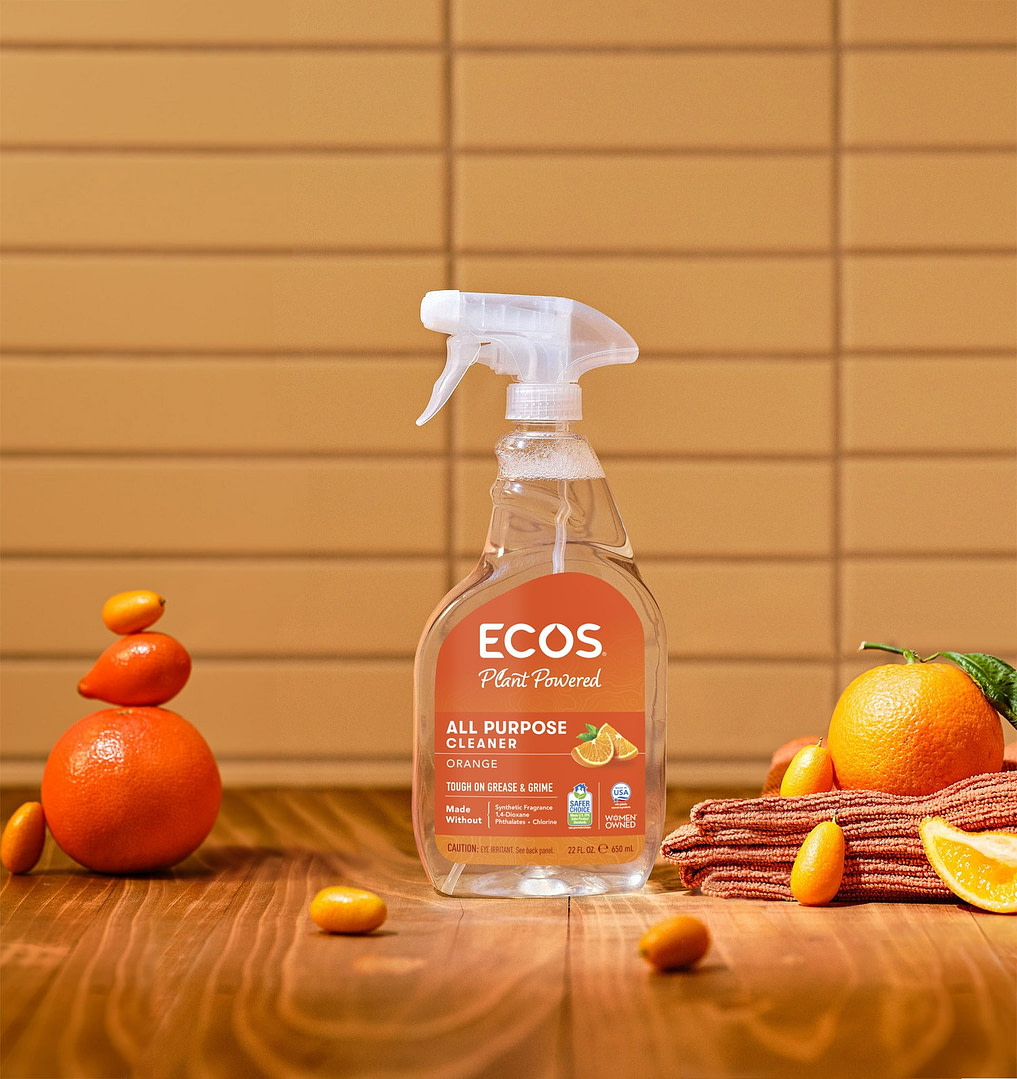This, Not That: A Guide to Better Ingredients
5 minute read

We’ve all been there. That moment you go to look at a bottle’s ingredient label and find a list of words you can’t pronounce, let alone identify. Sometimes it feels like you need a PhD in chemistry just to understand what’s safe or unsafe for your home. While we can’t offer you an advanced degree, we can promise to be as transparent and open as possible about what we put in our ECOS products. Unlike many conventional cleaners, we list all our ingredients. And if that’s not enough, we also list all the ingredients we promise to never use, AKA “The Nasties.”
Whether it’s because they can cause skin irritation, produce carcinogens, or are bad for the environment, there’s a big, bad world of cleaning chemicals that are best to avoid. But that’s no cause for alarm, because there are also very easy, very effective alternatives for each and every one. And to prove it, we want to share our knowledge on three popular “Nasties” and the alternative ingredient we use to achieve an equally effective clean. Get your goggles ready and let’s talk chemistry!
SURFACTANTS:
Ethoxylated Surfactant vs. Non-Ethoxylated
First off, what is a surfactant? In cleaning, they’re the chemical compound that does the heavy lifting of soil and stain removal. Surfactants bust through water’s strong surface tension, ensuring that soils can be carried away, making them essential to things like laundry detergent. Surfactants come in many forms – good and bad. We consider ethoxylated surfactants “nasty” because the process in which they are made creates a harmful byproduct known as 1,4-dioxane. 1,4 dioxane is a known carcinogen and neurotoxin. And what’s even sneakier? It’s never listed on labels! Luckily, there are some easy tricks to avoid it. Ethoxylated surfactants usually end in “-eth,” such as laureth-6, sodium laureth sulfate (SLES), or ceteareth.
So what’s a good alternative? Plant-powered, non-ethoxylated surfactants such as sodium coco sulfate. Sodium coco sulfate uses coconut oil pressed from the inside meat to create a surfactant with excellent cleaning properties while remaining exceptionally gentle. You’ll find it in many of our products, like our hypoallergenic laundry detergent.
PRESERVATIVES:
Parabens vs Safer Choice-Approved Preservatives
Preservatives are necessary for keeping cleaning formulas shelf-stable, but not all are created equal when it comes to safety. For example, parabens are a class of synthetic preservatives found in many commercial products. Studies have shown that parabens mimic estrogen in the body, which can have potentially harmful effects on fertility and increase cancer risks. To avoid them, keep in mind common paraben preservative names like methylparaben, butylparaben and polyparaben.
For our formulas, we do our best to use Safer Choice-Approved preservatives, like Potassium Sorbate. So what is Safer Choice? It’s a seal of approval created by the U.S. Environmental Protection Agency to help consumers find cleaning products that are safer for their health and the environment without sacrificing performance. We have over 150 Safer Choice products (more than any other company!). You can read more about Safer Choice here.
EXTRA CLEAN:
Optical Brighteners vs Oxobrite
Optical brighteners are an example of a product being “over-engineered.” They are equivalent to a fluorescent dye. And while they may make your clothes look “fresher” or brighter, they actually do nothing when it comes to cleaning your clothing. In fact, they often leave behind residue that can irritate skin in order to achieve a “brighter” look, not to mention they’re not 100% vegan and will bioaccumulate. You can avoid optical brighteners by looking for laundry detergents that are clear and do not have any iridescence or fluorescence. And if you’re still interested in giving your clothing a clean boost, we recommend our Oxobrite, made with stain-lifting minerals. It’s an earth-friendly bleach-alternative that you can use around the house without worrying about nasty, hidden chemicals.
Alright, feel free to remove those goggles now. We’re done talking chemistry. But if you want to do a little extra homework, you can always take a look at our clean chemistry page. That’s where you’ll find some of our favorite ingredients (both naturally-derived and lab-made) as well as our extensive list of “Nasties.” And if you’d like to know more about cleaning ingredients on a public policy level, take a look at our blog post, Legally speaking, what’s the deal with cleaning? Without further ado, class dismissed!
